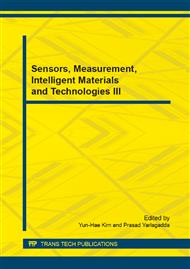p.635
p.639
p.643
p.648
p.656
p.662
p.666
p.670
p.674
Registration of 3D Point Cloud of Human Body Based on the Range Images and RGB Images
Abstract:
The existing 3D reconstruction techniques rarely can be easily used in people's daily life, and the traditional registration algorithms have the drawback of massive calculation. In this paper it presented a registration algorithm of body point cloud based on RGB images and Range images. First, it used kinect to obtain the RGB images and Range images from different perspectives. Then it extracted the pairs of 2D feature points on RGB images using scale-invariant feature transform (SIFT) and random sample consensus (RANSAC) algorithm application for the coarse registration and used the improved iterative closest point (ICP) algorithm for the fine registration. Second, it eliminated the background information and the noise points of the model edges. Finally it completed the registration process. Experimental results show that the algorithm can accurately accomplish the body point clouds registration using the low-cost instrument and has a relatively high efficiency.
Info:
Periodical:
Pages:
656-661
Citation:
Online since:
March 2015
Authors:
Price:
Сopyright:
© 2015 Trans Tech Publications Ltd. All Rights Reserved
Share:
Citation:


